Thursday began with a drive out to the countryside for a visit at the Lithuanian Institute of Horticulture. We were welcomed by Dr. Rasa Karkleliene, Head of Vegetable Breeding Sector and Scientific Officer, and Dr. Adrius Sasnauskas, Vice-director of Science for the Genetic and Biotechnology Department (!).
We gathered in the board room and watched a very professional video explaining the size and scope of the Institute, with images of some of their over 400 hectares of idyllic apple and pear orchards, biotech labs, and delicious-looking (GE!) strawberries. The Institute is involved in every aspect of food science, from variety development to processing all in one place. They are funded only 30% by the Lithuanian government, with other funding sources coming from the EU or companies such as Syngenta (the giant biotech/chemical multinational corporation). Go here to see how Syngenta and Monsanto work together. This year the Horticultural Institute began their first organic plot – two hectares for organic variety development.
Photos, from left to right: 1. The Lithuanian Institute of Horticulture; 2. In the meeting in the board room, talking about SAP and learning about what happens at the Institute; 3. Dr. Rasa Karkleliene and a colleague taking samples of some of our varieties.
After learning about who and what we were up against, we gave an overview of our project and Andrew presented the slide show, which by this point was smooth as silk, and talked a little bit with the Doctors, who were extremely friendly and very interested in our project. Not one word was mentioned about our differing philosophies of plant development, and it was nice to have conversations with actual biotech scientists, because despite our obvious differences in methods (and world view), they are working for the some of the same things we are: superior vegetable varieties.
A short time later, we moved on to Dr. Sasnauskas’ office to swap seeds with Dr. Karkleliene. She gave us-open pollinated carrots, beets, onions, and a radish that she had developed at the institute which are all on Lithuania’s National List, as well as a Belarussian cabbage. She and her colleague took some of our seeds, and then we sampled two of her carrot varieties. Of course, we all came to the un-biased conclusion that the OP variety tasted much better :)– it was sweeter and had a more delectable consistency than its hybrid cousin. After that it was off to lunch, unfortunately with no tour of the greenhouses or lab facilities.
After lunch we traveled to the Lithuanian Institute of Agriculture to meet with Lithuania’s Grandfather of Organic Agriculture, Prof. Habil. Dr. Antanas Svirskis. We also presented to an audience of ten or so at this Institute in a large auditorium complete with lecture podium — slightly overwhelming and not necessarily suitable for such a small audience, but it made us feel important. :).
After our presentation and a short discussion, we walked with Dr. Svirskis to the other side of the Institute and got a little bit of history of the place from the man that has worked there for over forty years. He told us stories of the old days, when colleagues of his would put sticky stuff on their fingertips so seeds would stick to them, to smuggle into and out of the USSR. In the 1980s, Dr. Svirskis wrote the first book in Lithuania about the benefits of organic agriculture, and has been a dedicated open-pollinated plant breeder for more than half of his life. He now lectures at a teacher’s college about how and why to integrate environmental education for holistic learning.
Dr. Svirskis took us to the Institute of Agriculture’s small gene bank, a collection of a few dozen freezers in a remodeled, climate controlled room deep within the heart of one of the Institute’s oldest buildings, where we were able to see the storage conditions of many of Lithuania’s traditional and newly developed varieties. He shared with us four millets that he has developed over the past ten years, from material acquired from colleagues in St. Petersburg and Moscow, sourced from middle Asia where it is a traditional food crop and not just bird food.
Dr. Svirskis took some of our varieties to work with and share with colleagues, and when we asked him to take only small amounts because our stores are getting low and we still have three or four months to travel, I will always remember his response, “For a dedicated plant breeder, one seed is enough.” A metaphorical response for some crops, but I’m sure he has had seen times when an increase from a single seed was the only option.
We left our meetings with Dr. Svirskis very inspired and appreciative for what this man has done in his lifetime to promote biodiversity and organic farming in Lithuania, and hope to someday be able to meet him again. He seemed also to be somewhat inspired by the Seed Ambassadors Project, because he told us with a gleam in his eye that if he were a young man, he would join our team and come along with us to visit and share seeds with people in other countries.
Photos, left to right: 1. Prof. Habil. Dr. Antanas Svirskis walking with the team in front of the Lithuanian Institute of Agriculture; 2. and 3. Dr. Svirskis explaining some of the millet varieties he shared with us; 4. A display case with some grains in it at the Institute; 5. Dr. Svirskis accepting some of our varities in the institutes gene bank; 6. Talking shop with another plant breeder at the Institue; 7. The rows of freezers at the Institute’s gene bank; 8. A look inside one of the freezers reveals separate freezing compartments and meticulously organized samples.
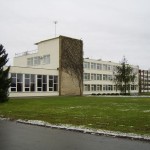
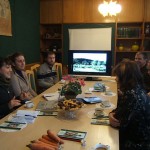
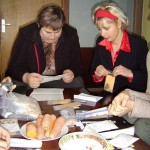
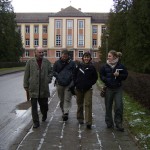
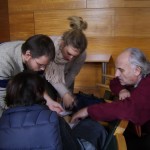
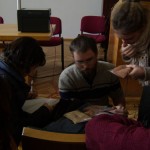
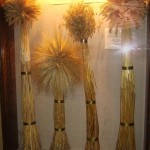
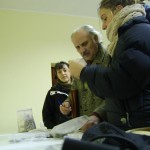
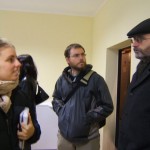
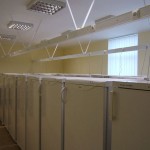
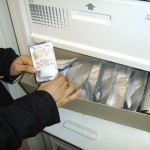
Leave a Reply